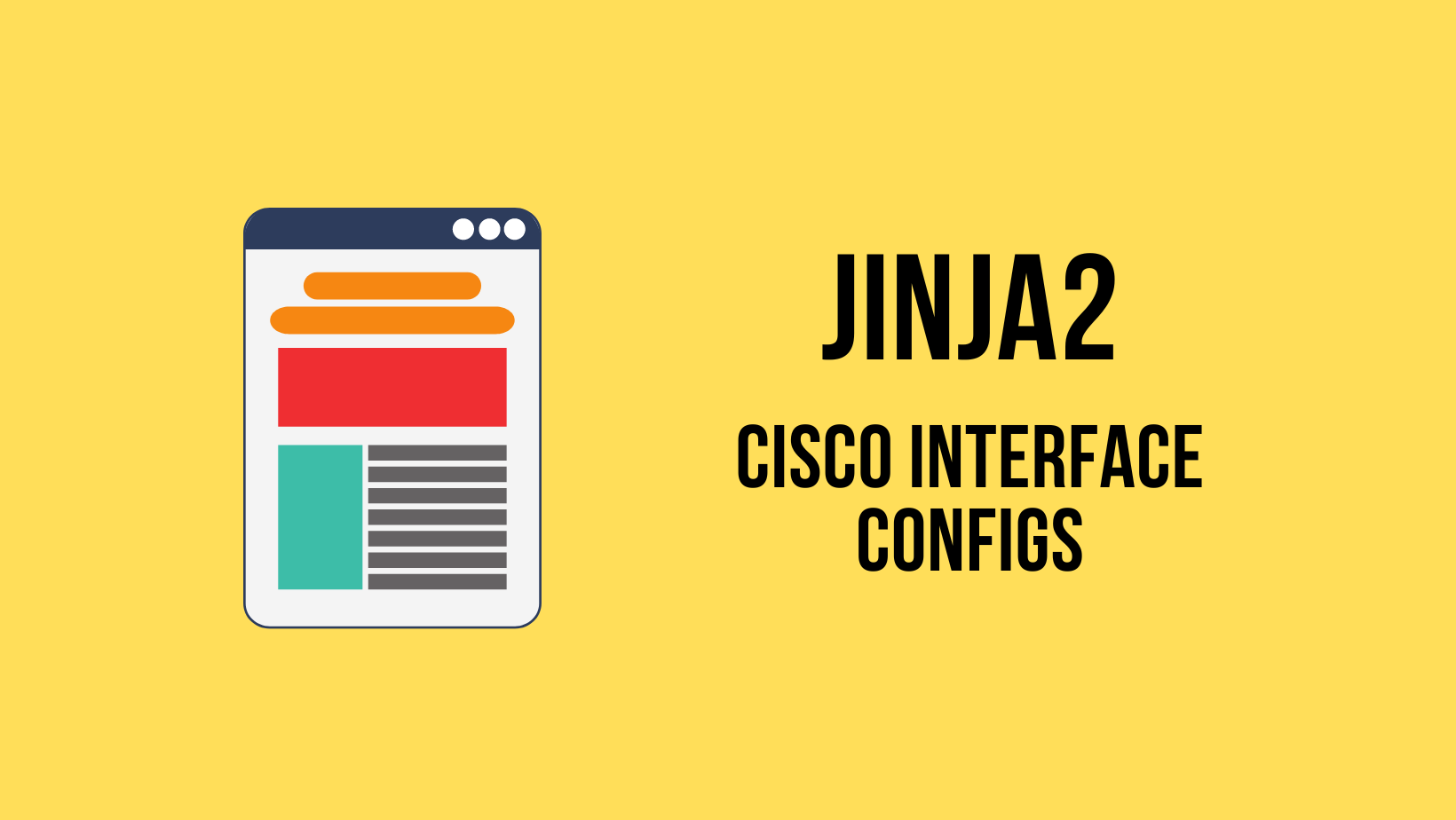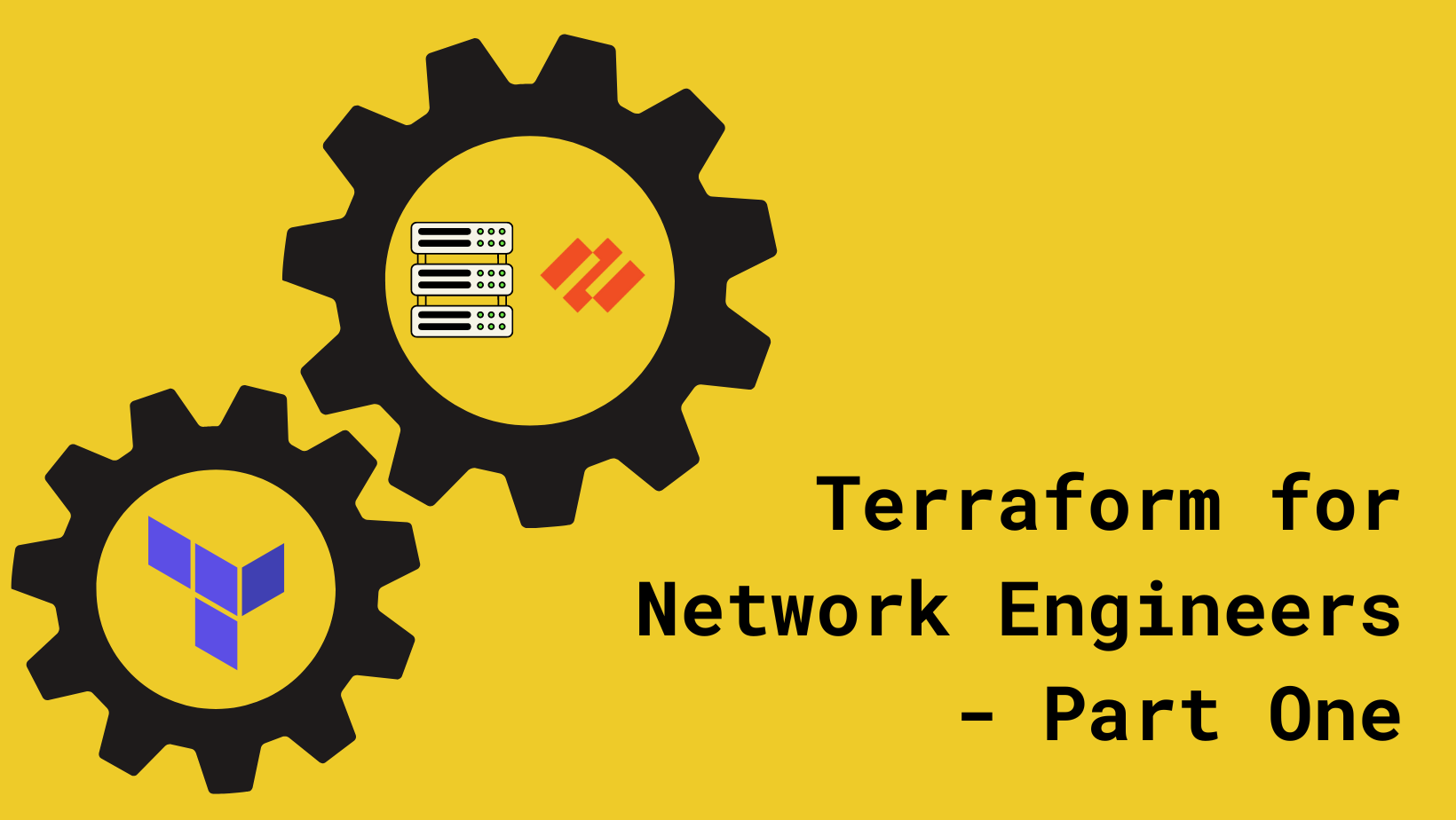Switching Jobs When You Love Your Current One

How many times have you found yourself perfectly comfortable in your current job, only to be tempted by a new opportunity? We’ve all been there. It’s tough to leave a place where you know everyone and everything feels familiar. The new job might turn out to be fantastic, or it could be less than ideal. So, how do we overcome these fears and make the right choice? In this post, I’ll share my own journey, exploring what I learned from my experiences. Hopefully, my story can help you navigate your own career decisions with a bit more confidence.
Early in My Career
I kicked off my career back in 2017, filled with an eagerness to learn and make rapid progress. During those early days, I was truly engaged in my work, often pulling long hours because all I could think about was advancing in my field. After spending a Continue reading
Rule 11 Academy June Update

Added 11 new lessons in June:
Palo Alto Load Partial Configuration

Hi all, welcome back to yet another Palo Alto Firewall blog. Have you ever wanted to load partial config from one Palo Alto Firewall to another or from a Firewall to Panorama and vice versa? There could be times when you just want to import all address objects from one Firewall to another, for example. We could do this in multiple ways, but there is a simple way of doing this. Let’s get into how you can achieve this with just a few steps.
To demonstrate this, I have a firewall and Panorama. On the firewall, there are a few address objects, address groups, and a security policy that I want to import into Panorama, inside a specific device group. Let’s walk through the steps.
- Export the configuration - Start by exporting the configuration from the firewall.
- Import it to Panorama - Next, import that configuration into Panorama.
- Identify the XPath of the objects - You'll need to find where the objects you want to copy are located in both the firewall and Panorama. Keep in mind, the XPath for these objects might be slightly different between the firewall and Panorama.
- Copy them over with a command - Finally, run Continue reading
How to Create Custom Jinja2 Filters?

Hi everyone, welcome back to another blog post on Jinja2 and Python. I'm not an expert in Jinja2; I know enough to get by and I'm always learning new things. I'm familiar with using Jinja2's built-in filters like upper, lower, and capitalize, but just a few days ago, I discovered something new. I can make my own filters! It was a real "wow, how did I not know that?" moment. In this post, let's dive into an example of how to do just that.

A Very Simple Example
Let's break down a very simple example of creating a custom Jinja2 filter. First, you need to understand the basic steps and the syntax involved. To start, you'll need to define a custom filter function in Python. This function will take an input, manipulate it as you specify, and return the modified output. In our example, the custom function will convert text to uppercase and add three exclamation marks at the end.
from Continue readingOracle OCI Traffic Mirroring and Monitoring: VTAP Implementation and Analysis
Disclaimer: All writings and opinions are my own and are interpreted solely from my understanding. Please contact the concerned support teams for a professional opinion, as technology and features change rapidly.
My name is Stephen King, and you are reading my novel. Absolutely Not! He is the most incredible author of all time! And you are reading my blog! One of my many, many, many interests is traffic mirroring and monitoring in public clouds, especially inter-VCN/VPC traffic. Traffic from an instance is mirrored and sent for any analysis, whether regulatory or troubleshooting. I quickly set up something in my OCI; the results and learnings are fascinating.
TLDR: Traffic Mirroring and Monitoring in Oracle OCI using VTAPs

Topology and a refresher

IGW helps us connect to the Internet, NLB helps us send traffic to VTAP-HOST mirrored from VTAP, and a DRG helps us communicate with other VCNs.
What is the end goal? Mirror and send all the traffic from Host-1 with IP 192.168.1.6 to VTAP-Host for further analysis.
Below is generated by OCI Network Visualiser, which is very cool.

A few things Continue reading
Terraform for Network Engineers: Part One

When I mention to my industry peers that I use Terraform to manage parts of my on-premise network infrastructure, I often get blank stares or a look of surprise. It's understandable — Terraform is usually associated with cloud infrastructure, not on-premise network devices. A quick Google search for "Terraform for Network Engineers" mostly brings up results about creating AWS VPCs, Azure VNETs, or deploying Palo Alto firewalls in AWS. There's not much out there about using Terraform for network devices like routers, switches, firewalls, and load balancers.
In this blog post series, I'll share my experience using Terraform to manage network devices and explain how it can benefit network engineers. While I'm not sure how many parts this series will have, I'll keep each post concise and informative, giving you the essentials to get started. If you have questions or need help, feel free to reach out.
Throughout the series, I'll use Palo Alto Network (Panorama) as the target, but the concepts can be applied to any network device that supports Terraform.
In Part One of this series, we'll cover the following topics:
- Introduction to Terraform.
- Understanding Terraform Terminology.
- Terraform Workflow.
- Deciding if Terraform is the Right Tool.
- Installing Terraform
Continue reading
Worth Reading: The Evolution of Network Security
Sharada Yeluri published an interesting overview of the evolution of network security, from packet filtering firewalls to GenAI and Quantum Computing (yeah, she works for a networking vendor ;). Definitely worth reading if you’re looking for an intro-level overview.
Worth Reading: The Evolution of Network Security
Sharada Yeluri published an interesting overview of the evolution of network security, from packet filtering firewalls to GenAI and Quantum Computing (yeah, she works for a networking vendor ;). Definitely worth reading if you’re looking for an intro-level overview.
Case Study: IPng at Coloclue

I have been a member of the Coloclue association in Amsterdam for a long time. This is a networking association in the social and technical sense of the word. [Coloclue] is based in Amsterdam with members throughout the Netherlands and Europe. Its goals are to facilitate learning about and operating IP based networks and services. It has about 225 members who, together, have built this network and deployed about 135 servers across 8 racks in 3 datacenters (Qupra, EUNetworks and NIKHEF). Coloclue is operating [AS8283] across several local and international internet exchange points.
A small while ago, one of our members, Sebas, shared their setup with the membership. It generated a bit of a show-and-tell response, with Sebas and other folks on our mailinglist curious as to how we all deployed our stuff. My buddy Tim pinged me on Telegram: “This is something you should share for IPng as well!”, so this article is a bit different than my usual dabbles. It will be more of a show and tell: how did I deploy and configure the Amsterdam Chapter of IPng Networks?
I’ll make this article a bit more picture-dense, to show the look-and-feel of Continue reading
Hedge 232: Writing and Publishing with Aninda Chatterjee
If you’ve ever wondered what the process of creating and publishing a book is like, listen in as Aninda joins Tom and Russ to discuss the trials and rewards of publishing his first book, Deploying Juniper Data Centers with EVPN VXLAN.
download
How the first 2024 US presidential debate influenced Internet traffic and security trends

Key findings:
- The Biden vs. Trump debate influenced Internet traffic at the state level in the US, with drops in traffic as high as 17% (in Vermont) during the debate.
- Microblogging and video streaming platforms saw traffic changes during the debate.
- Trump-related sites, including donation platforms, gained much more traction than Biden’s during and after the debate.
- Emails with “Trump” in the subject had higher rates of spam and malicious content compared to those with “Biden.”
- No increase in cyberattacks during the debate, but frequent DDoS attacks targeted government and political sites in the preceding months.
Internet traffic ebbs and flows usually follow human patterns, and high visibility events that are broadcast on TV usually have an impact. Let’s take a look at the first of the 2024 United States presidential debates between the two major presumptive candidates, Joe Biden and Donald Trump, for the November presidential election.
2024 has been dubbed “the year of elections,” with elections taking place in over 60 countries, as we have mentioned before (1, 2, 3). We are regularly updating our election report on Cloudflare Radar, including analysis of recent elections in South Africa, India, Iceland, Mexico, Continue reading
Supporting Postgres Named Prepared Statements in Hyperdrive

Hyperdrive (Cloudflare’s globally distributed SQL connection pooler and cache) recently added support for Postgres protocol-level named prepared statements across pooled connections. Named prepared statements allow Postgres to cache query execution plans, providing potentially substantial performance improvements. Further, many popular drivers in the ecosystem use these by default, meaning that not having them is a bit of a footgun for developers. We are very excited that Hyperdrive’s users will now have access to better performance and a more seamless development experience, without needing to make any significant changes to their applications!
While we're not the first connection pooler to add this support (PgBouncer got to it in October 2023 in version 1.21, for example), there were some unique challenges in how we implemented it. To that end, we wanted to do a deep dive on what it took for us to deliver this.
Hyper-what?
One of the classic problems of building on the web is that your users are everywhere, but your database tends to be in one spot. Combine that with pesky limitations like network routing, or the speed of light, and you can often run into situations where your users feel the pain of having your Continue reading
HN740: IETF’s Network Management Operations (NMOP) Working Group
When you think of IETF, you probably just think of defining protocols, but its new NMOP working group is all about helping network operators identify issues and deploy solutions, including those that pop up around automation. Mahesh Jethanandani is an NMOP leader and joins the show today to tell us what they are working on... Read more »Worth Reading: Don’t Use Excel as a Source of Truth
Some people insist on using Excel as the ultimate source of user-supplied data (including network automation source of truth).
If you agree with me that that’s not necessarily the best idea out there, you might enjoy this rant by Nikhil Suresh.
Worth Reading: Don’t Use Excel as a Source of Truth
Some people insist on using Excel as the ultimate source of user-supplied data (including network automation source of truth).
If you agree with me that that’s not necessarily the best idea out there, you might enjoy this rant by Nikhil Suresh.
Embedded function calling in Workers AI: easier, smarter, faster

Introducing embedded function calling and a new ai-utils package
Today, we’re excited to announce a novel way to do function calling that co-locates LLM inference with function execution, and a new ai-utils package that upgrades the developer experience for function calling.
This is a follow-up to our mid-June announcement for traditional function calling, which allows you to leverage a Large Language Model (LLM) to intelligently generate structured outputs and pass them to an API call. Function calling has been largely adopted and standardized in the industry as a way for AI models to help perform actions on behalf of a user.
Our goal is to make building with AI as easy as possible, which is why we’re introducing a new @cloudflare/ai-utils npm package that allows developers to get started quickly with embedded function calling. These helper tools drastically simplify your workflow by actually executing your function code and dynamically generating tools from OpenAPI specs. We’ve also open-sourced our ai-utils package, which you can find on GitHub. With both embedded function calling and our ai-utils, you’re one step closer to creating intelligent AI agents, and from there, the possibilities are endless.
Why Cloudflare’s AI platform?
OpenAI has been the gold Continue reading
IPB154: IPv6 Basics: Neighbor Discovery
Imagine a world with no broadcast storms, basically no DAD issues, not even ARP and reverse ARP. That is the world of IPv6 neighbor discovery. In today’s episode, we teach you the simplicity of IPv6 neighbor discovery: just native Layer 3 addresses, ICMPv6, and multicast. If you’ve ever been annoyed at a guy hopping on... Read more »NVIDIA Air Infrastructure Simulation Platform

I recently tested the NVIDIA Air Infrastructure Simulation Platform and would like to share my first experiences with you. What is NVIDIA Air Infrastructure Simulation Platform or NVIDIA Air? In a nutshell, NVIDIA Air is a cloud-hosted, data center simulation platform. Where you can: Test and validate network configurations, features, and automation code. Build your own data center topology or choose from an impressive list of pre-built topologies. You can use Cumulus Linux or SONiC as network operating system, add Ubuntu nodes, and more. Import / Export lab topologies. Share the…
The post NVIDIA Air Infrastructure Simulation Platform appeared first on AboutNetworks.net.
AI/ML Networking Part I: RDMA Basics
Remote Direct Memory Access - RDMA Basics
Introduction
Remote Direct Memory Access (RDMA) architecture enables efficient data transfer between Compute Nodes (CN) in a High-Performance Computing (HPC) environment. RDMA over Converged Ethernet version 2 (RoCEv2) utilizes a routed IP Fabric as a transport network for RDMA messages. Due to the nature of RDMA packet flow, the transport network must provide lossless, low-latency packet transmission. The RoCEv2 solution uses UDP in the transport layer, which does not handle packet losses caused by network congestion (buffer overflow on switches or on a receiving Compute Node). To avoid buffer overflow issues, Priority Flow Control (PFC) and Explicit Congestion Notification (ECN) are used as signaling mechanisms to react to buffer threshold violations by requesting a lower packet transfer rate.
Before moving to RDMA processes, let’s take a brief look at our example Compute Nodes. Figure 1-1 illustrates our example Compute Nodes (CN). Both Client and Server CNs are equipped with one Graphical Processing Unit (GPU). The GPU has a Network Interface Card (NIC) with one interface. Additionally, the GPU has Device Memory Units to which it has a direct connection, bypassing the CPU. In real life, a CN may have several GPUs, each with multiple memory units. Intra-GPU communication within the CN happens over high-speed NVLinks. The connection to remote CNs occurs over the NIC, which has at least one high-speed uplink port/interface.
Figure 1-1 also shows the basic idea of a stacked Fine-Grained 3D DRAM (FG-DRAM) solution. In our example, there are four vertically interconnected DRAM dies, each divided into eight Banks. Each Bank contains four memory arrays, each consisting of rows and columns that contain memory units (transistors whose charge indicates whether a bit is set to 1 or 0). FG-DRAM enables cross-DRAM grouping into Ranks, increasing memory capacity and bandwidth.
The upcoming sections introduce the required processes and operations when the Client Compute Node wants to write data from its device memory to the Server Compute Node’s device memory. I will discuss the design models and requirements for lossless IP Fabric in later chapters.


